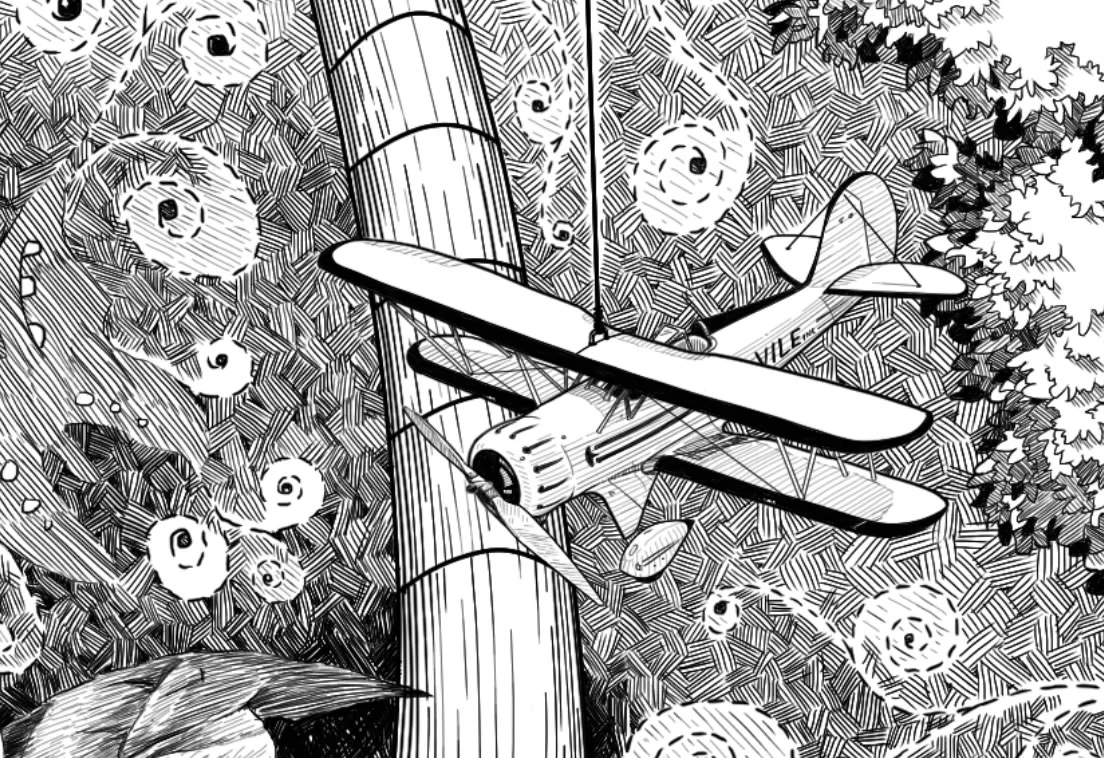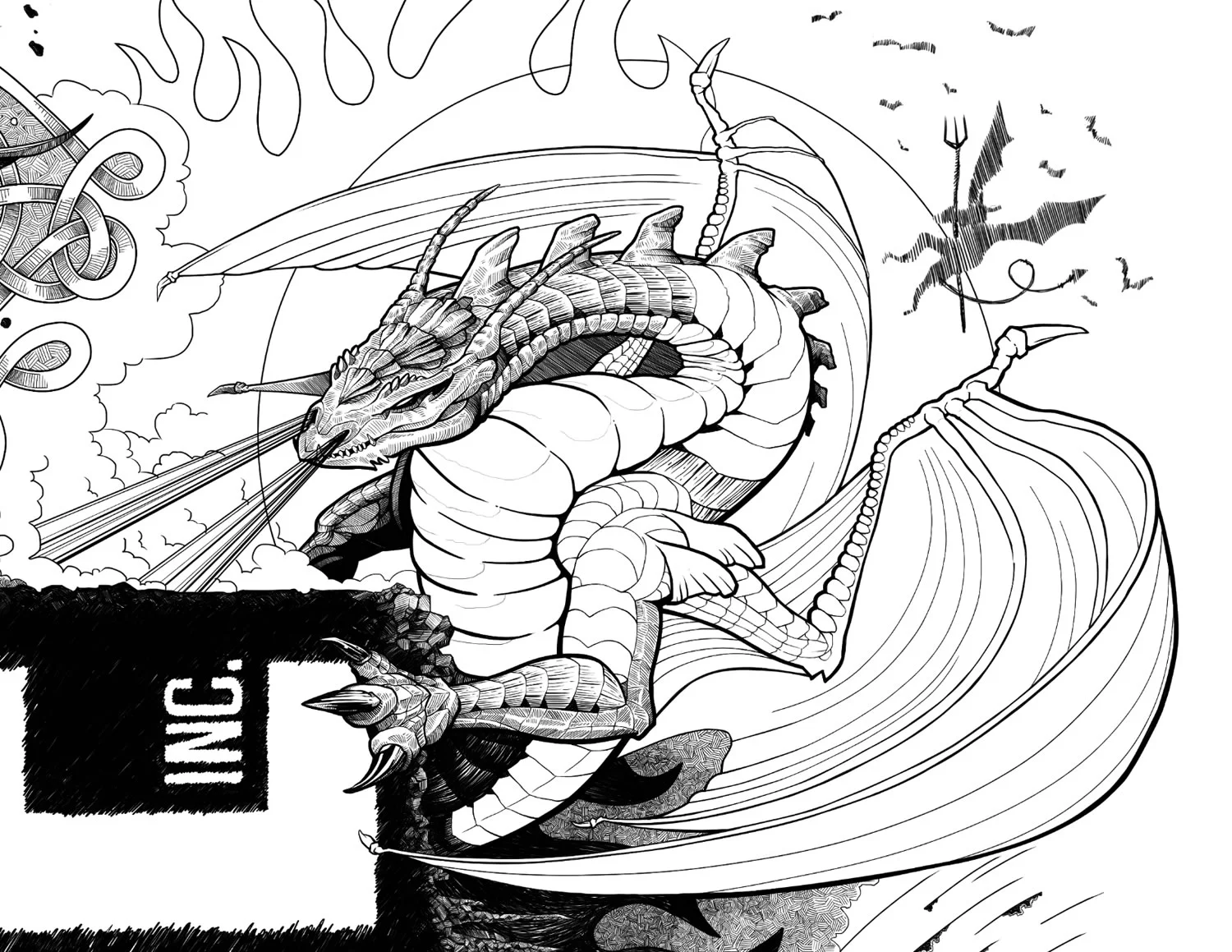By the time I sat down to begin the illustration for the home page of VILE, I had already invested hundreds of hours into how I wanted to portray the company. Which is a roundabout way of describing my near-total creative paralysis. Designing for yourself is the most difficult thing you will ever do. But this, this was holy-shit-balls big.
Everything changed the day I finally stopped over-thinking everything and told myself "get to work" (and I'm relatively sure "asshole" appended that statement). I sat at my drafting table and started sketching. My original thoughts about how I would integrate illustration with the web site changed dramatically as I watched the image unfold in blue line. A few days later with the image successfully extracted from my brain-thing, I had a working template for an illustration that would afford me the flexibility all of my original ideas lacked.
My process almost always begins with a pencil. I use a Non-Photo Blue pencil to work through concepts on tracing paper. Why a blue pencil? Well, this is an old illustrators trick. A Non-Photo Blue pencil is used to compose the underdrawing then a regular graphite pencil can be drawn directly over the blue line to clean up the line work. Once the drawing is complete, it would get thrown on a scanner and imported into a graphics application. The scanner can't "see" the blue line and will only pick up the dark graphite line. Nowadays when I work digitally, I simply take a photo with my iPhone, import the photograph and use the blue line as an underdrawing in Sketchbook Pro, Photoshop or Illustrator.
From here on out, the process was all about production and time. Lots and lots of time. My drawing app of choice is Sketchbook Pro because it is the most "natural" drawing tool available when combined with a Wacom tablet or Cintiq. All of the line work for this piece was done using a stylus, a 9" Wacom tablet with the drawing area constrained and liberal use of Command-Z and my eraser.
The foundational line work took a few days to complete.
Once the line work was completed, I settled into my zen mode and started adding detail and volume to the shapes. My intention had been to simplify the drawing and block in lights and darks to create a more graphic image in order to save time and minimize effort. My detail obsessed brain had other plans.
As the drawing began to take shape, I started seeing opportunities to incorporate different styles of line work. If you look closely, you'll begin to see a variety of hatching techniques used throughout the illustration.
Among the benefits of working digitally is the ability to easily make changes. I redrew many of the vignettes numerous times. For example, I redrew both the squid and the knight at least five times before I got the style I was aiming for. Sometimes the redrawing process involved taking a screenshot, printing it out, and going back to the drawing board and my trusty blue pencil. You can see that process with the squid in the following images.
The underworld was rather enjoyable to draw. I took inspiration for these elements from numerous art historical sources including Illustrations of Dante's Inferno by Gustave Doré as well as a few illustrators whose line work I admire.
The final major element I had to complete was the dragon. I redrew this element about seven times before I finally got it right. The detail, by this point, was absurd.
The illustration was nearly complete. I only had a few remaining elements to finish and needed to clean up pesky random artifacts from sloppy stylus handling.
The final illustration below shows the last of the tweaks. I replaced the clouds framing the dragon with mountains and added a reference to van Gogh's Starry Night in the window opening in the tree. My last stroke of near-genius came with the bats. I added bats near the water spray to give the impression of a water-to-bat transition.
After six weeks and approximately 200 hours of work, I stretched my spine, put down my stylus and called this illustration done. Followed by an expletive.
The bottom line is that there really isn't a secret to process with drawing. Once you've got the concept nailed down, all that is required to complete the illustration is time, effort and patience. Especially, if you are detail-obsessed. Sure there are little tricks here and there you can use to revise your work, but it's all fairly commonsensical. Just draw. That's all there is to it.
Finally, the concept for the illustration can be summed up in one word: Imagination. All of the activity swirling about is a product of the little boy's imagination. In other words, read more, support the arts, and day dream.
Thanks for reading
-P





















































